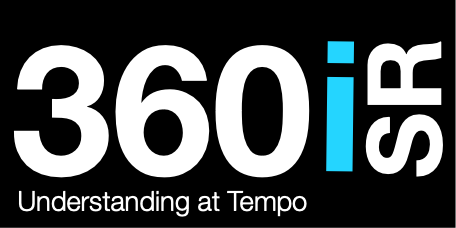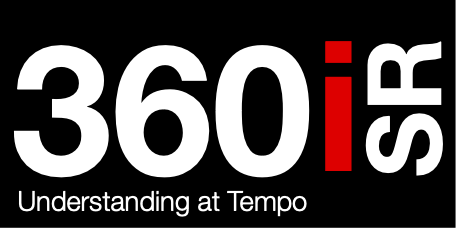The 6th Domain
Ewen Sime • April 20, 2021
Is Multi Domain Operations Missing the Obvious?
The Evolution of Warfare
Over the years we have seen a procession of forms of combat. Trench warfare epitomised industrial warfare. After long, disastrous years of stalemate and mutual destruction, there was a change in technology and doctrine. The Germans focused on the scheme of manoeuvre by implementing infiltration tactics while the British and French focused on the development of tanks to achieve victory. Trench warfare, as a singular tactic, was over and manoeuvre was now king.
During the second world war, technology evolved once gain and AirLand integration was born. Later, with the development of the V1 and V2 systems, the German forces applied technological asymmetric advantage. The V2 in particular saw a significant development with the expansion of the battlespace beyond traditional boundaries. Whereas before, mass bombing raids allowed some degree of warning, civilians were now vulnerable with little to no prior knowledge of attack, leading to a physical and psychological terror.
Technology enabled tactics to evolve and the battlespace itself to change. This evolution did not stop after the second world war but continued through the Counter Insurgencies of the 1970s and 80s and the terrorist type conflicts seen in Northern Ireland. The divergence of tactics and of the battle space itself led to an all-encompassing opponent; one that was not limited in geography and one that was not bounded by the ethics and legality. We were faced by a new threat and a capability that levered asymmetries that elevated pervious combatants to a near peer or even peer status.
Near-peer and peer competitors brought about the need to focus on MDO as the adversary would look and fight much differently than the COIN tactics the West had been faced in recent wars. Now, every domain would be contested, and the speed of warfare only increased as physical boundaries were discarded and a new global mission space evolved.
The epitome of this type of conflict can be seen in the hands of Russia and China. With their Hybrid or Total War philosophies they have used every aspect of influence and effect to create chaos among civilian populations. Russia has also been identified in several elections meddling campaigns around the world, including Ukraine, France, and the US, which arguably had strategic effect including regime change.
The Emergence of MDO
As with all advances in adversary capabilities, Western forces seek to develop technology, personnel and/or procedures in order to mitigate or defeat the emerging threat. The most recent offering by Western forces is the concept of Multi Domain Operations.
MDO addresses the 5 domains of Air, Land, Maritime, Cyber and Space in the hope that a Joint Force can achieve competitive advantage over a near-peer adversary by presenting multiple complementary threats that each requires a response, thereby exposing adversary vulnerabilities to other threats. In other words, MDO is a way to provide effects with timing and tempo that the enemy cannot compete with.
However, professors Jared Donnelly and Jon Farley states that we are beginning to see how nonphysical domains are starting to have real effects on missions. They proposed the
definition of a domain given by Jeffrey Reilly, the director of the American ACSC Multi-Domain Operations Strategists concentration, as a “critical macro manoeuvre space whose access or control is vital to the freedom of action and superiority required by the mission.” It is simply an area that one must have access into and an area in which one can make effects, and this arena does not have to be physical.
This last sentence should resonate with us all… does not have to be physical.
The Sixth Domain
A sixth domain has been under consideration lately due to the rise in information operations, and that is the cognitive domain. Gen Robert Brown, commander of US Army Pacific, stated that the cognitive domain should not only be considered a domain, but, in his opinion, it is the most important domain.
The cognitive domain is becoming increasingly more important with the introduction of space and cyber technologies. The domain has opened up the populace to more information, making the traditional gatekeepers inadequate, and making it easier for any actor, state or nonstate, to make effects in any domain. The traditional gatekeepers are being outpaced at sharing information by entities such as Twitter, Facebook, and other social media platforms.
The author, David Patrikarakos, in his book, War in 140 Words, describes how he was seeing the evolution of conflict. “I began to understand that I was caught up in two wars: one fought on the ground with tanks and artillery, and an information war fought largely, though not exclusively, through social media. And, perhaps counter-intuitively, it mattered who won the war of words and narratives (rather) than who had the most potent weaponry”.
In this sentence the author captures the power of social manipulation and the dominance of the cognitive domain. And yet MDO does not directly address the thorny issue of countering or creating effect in this domain. Why is this when a strategic appreciation of these people-centric dimensions is more important now than ever. Recent interventions in Crimea and Donbas demonstrate the effectiveness of this new generation cognitive domain strategy, expose some critical weaknesses in traditional approaches to unconventional war, and provide lessons for future strategic design.
The importance of the cognitive domain cannot be under stated. Many narrators focus on how offensive cognitive operations can be executed in order to manipulate a target audience. Less is written about the protection of a centre of gravity, namely the civilian population. Theorists have long understood that the population is a critical centre of gravity in warfare. More specifically, both Carl von Clausewitz and Sun Tzu linked popular support to the moral element of warfare: that is, a campaign’s morality or legitimacy is determined by the interests and will of the people supplying it, fighting in it, voting on it, and suffering from it. Therefore, leaders should target both their own people and their enemy’s: they should seek to treat their own with “benevolence, justice, and righteousness, [reposing] confidence in them,” while simultaneously attacking the enemy’s population to bring about a “gradual exhaustion of his physical and moral resistance.” The population is the third element of Clausewitz’s trinity, and in unconventional war it is arguably the most important. Exhausting popular will can damage an enemy more than seizing territory or inflicting physical damage—indeed, it is the intended end result of that seizure or damage. In the context of modern risk aversion and concern about social media ridicule or backlash, public support has become the critical centre of gravity for all liberal democracies. The adversaries know this. They know our liberal frailties and they exploit them.
Our near peer and peer competitors, the very threats MDO was supposed to have mitigated, seem to go on regardless. The recent events that capture the attention, of a global audience, bound by 24/7 and unrelenting social media and commentary illustrate the very power of the cognitive domain. The population will continue to play an even more vital role in twenty-first century unconventional conflict. It is an era of round-the-clock news coverage, where the population, aided by smartphones, cable television, and social media, can track its government and military with startling frequency.
People are more connected, more intitled to opinion and mindful of the financial value of influence. Individuals are inundated by distraction upon distraction: from the latest rumour about a stewing political controversy to report that a fatal shooting has occurred in one of our inner cities. The facts are not the main interest, just the perception that an injustice has been committed and justice will be served through thrusting an opinion. Soon the true nature of the original story is lost… more importantly the original story now does no matter. The population creates and is susceptible to misinformation. In the never-ending search for TV ratings, primetime networks push “breaking stories” without properly validating their accuracy, featuring “expert” analysts on screen whose remarks can be swayed by emotion or impulse that are passed on to viewers at home.
The cognitive domain offers a safe playground for the adversary. Actions are easily disguised. Articles and opinions, fake news, can be planted on unsuspecting Facebook pages for onward sharing. Stories can be altered subtlety over time in an insidious creep toward extremism. The domain offers anonymity.
Gen Robert Brown is correct: the cognitive domain is the most important. It does matter who wins the “war of words and narratives”, and yet MDO does little to address these issues concentrating more on traditional military threats such as A2AD.
So what are we going to do about it?




